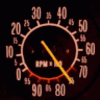Abot 20 years ago I read that an engine running on Super ( leaded for you young folk ) petrol with a volumetric efficiency of 100% would create 1 HP/CID @ 5600 RPM and 1.25 HP/CID @ 7000 RPM. Does anybody have the equations for 91 octane ULP, 98 octane ULP and E85? I just like to keep my mind busy.

Calculating volumetric efficiency
#1

Posted 04 November 2014 - 04:36 PM
#2

Posted 04 November 2014 - 09:44 PM
Too hard Vic.
#3

Posted 04 November 2014 - 11:40 PM
So that's one member who can't help and another 6,829 members who might.
#5

Posted 06 November 2014 - 08:52 PM
Thanks for the link, but I found that one before starting this topic. That, like most others I found only calculate theoretical airflow. The actual HP achieved ( which is what I'm after ) will vary depending on fuel type used.
#6

Posted 07 November 2014 - 07:29 AM
I think your reading too much into what you read 20yr ago, was it in Street Machine?
#7
 _STRAIGHTLINEMICK_
_STRAIGHTLINEMICK_
Posted 07 November 2014 - 09:05 AM
Been thinkin about this one , OK to get the discussion rolling , the main parameter that will change with different fuel is comp ratio .The comp ratio must be just low enough to allow proper ignition timing to achieve max power with the chosen fuel . Where u may have had 11:1 or more with super fuel ,you now would use 9.5:1 or less for 95 octane .Using this calculator from Wallace racing ( www.wallaceracing .com/hp-cr-chg.php ) if u plug in say 200 hp at 11: 1 you get 192hp at 9.5:1 so about a 5% loss.
A penny for yr thoughts .
(if the link doesnt work just type it in manually)
Edited by STRAIGHTLINEMICK, 07 November 2014 - 09:08 AM.
#8

Posted 07 November 2014 - 05:38 PM
Can't help at all.The fuel used will be the governing and fixed factor.
And as mentioned time and when peak pressure is realised will be a factor as well.
The BTU's of the fuel and peak pressures reached due to comp./adiabatic compression will also play a part.
Consider a V8 supercar,,,they reckon that they make 100HP/L or better on E85..(100-110% VE) but what bore/what stroke/what comp/what manifold/cam etc.
The only way i see it to calculate VE is to have an assembled engine set up and spin it with another engine or motor and do some flow readings in the real world?
Not sure about if flow rates of heads are "corrected" for reality but if you do some numbers on some of the high flow mega HP ports/valves etc saying that these heads will make "X" HP...at what rpm/what cam/what valve size..bla bla bla.
Back in the 40"s they even placed Quartz windows in cylinders to observe what was going on in a cylinder,along with pressure gauges and a plethora of other shit just so they could find out what was really going on in there.
Interisting though.
#9
 _HRG735_
_HRG735_
Posted 28 January 2015 - 10:35 AM
Hi Vick. I've just joined the site and looking over the topics and just found yours. My old TAFE (1970's), teacher used to tell us you cannot achieve 100% Volumetric Efficiency from an internal combustion engine. The amount of air-fuel mixture taken into the cylinder on the intake stroke is a measure of the engines volumetric efficiency. If the mixture was drawn in very slowly, then a full cylinder of air could be drawn in. However, the mixture must pass through a series of restricting bends in the induction system. In addition, the mixture is heated (from engine heat), it therefore expands. The two conditions, rapid movement and heating, reduce the amount of mixture that can get into the cylinder. A full charge of air-fuel mixture cannot enter because the time is too short and because the air becomes heated.
Volumetric Efficiency is the ratio between the amount of fuel-air mixture that actually enters the cylinder and the amount that could enter under ideal conditions. Reference Automotive Mechanics, Metric Edition - May and Crouse (I knew I kept my old tech books for a reason)! Back in the 70's VE was between 50-80% for production engines. Modern advances has increased these values, however rapidly moving air and heat are still the Achilles Heal of internal combustion engines. Forced induction by super-charging and turbo-charging increase VE by forcing more air-fuel mixture into the cylinder. Not sure if this information helps what your actually after as there are so many variables that affect theoretical VE and octane rating is just one. Gee it feels get to use the old grey-matter again, been along time. Regards, Scott.
#10
 _Bomber Watson_
_Bomber Watson_
Posted 28 January 2015 - 10:52 AM
Lots of na engines make more than 100% volumetric efficiency incl a fair few production engines from the last 20 years.
#11
 _LS1 Hatch_
_LS1 Hatch_
Posted 28 January 2015 - 10:59 AM
From wikipedia as an example...Your tafe teacher may have been right then, but that information i far from correct in this day and age.
Lots of na engines make more than 100% volumetric efficiency incl a fair few production engines from the last 20 years.
Volumetric efficiencies above 100% can be reached by using forced induction such as supercharging or turbocharging. With proper tuning, volumetric efficiencies above 100% can also be reached by naturally aspirated engines. The limit for naturally aspirated engines is about 100%;[1] these engines are typically of a DOHC layout with four valves per cylinder. This process is called Inertial Supercharging and uses the resonance of the intake manifold and the mass of the air to achieve pressures greater than atmospheric at the intake valve. With proper tuning (and dependent on the need for sound level control), VE's of up to 130% have been reported in various experimental studies. [2]
More "radical" solutions include the sleeve valve design, in which the valves are replaced outright with a rotating sleeve around the piston, or alternately a rotating sleeve under the cylinder head. In this system the ports can be as large as necessary, up to that of the entire cylinder wall. However there is a practical upper limit due to the strength of the sleeve, at larger sizes the pressure inside the cylinder can "pop" the sleeve if the port is too large.
#12
 _HRG735_
_HRG735_
Posted 28 January 2015 - 01:38 PM
Thanks for the up to date info guys, I knew there had been tremendous advances in technology, however not to that extent. I knew my info was not what Vick required, but it gets back to the basic fundamental - how much air/fuel mixture can you jam into a cylinder with such a short time-frame between strokes. They are obviously overcomming the difficulties our previous engineers couldn't. The info is much appreciated, and it keeps the thread going. Scott.
#13
 _Gunmetal LH_
_Gunmetal LH_
Posted 22 February 2015 - 06:37 PM
Well, better late than never...
Many years ago at a TAFE pre-voc (aicraft maintenence engineering) course we worked out the power increase of an aircraft engine going from 100 octane to 130.
To work it out took up nearly an entire page doing about 20+ calculations.
The main things were the materials the engine was made out of and how they absorbed heat energy with the different burn rates, and the slightly different timing to suit the new fuel which had more Btu's.
This was more than 20 years ago mind you so I can't remember specifics just that it was fascinating and bloody complex! Thermodynamics- interesting but not for me as a career.
In short, the (theoretical) engine made 750hp on 100 octane and a touch over 1000hp with 130 octane.
#14

Posted 23 February 2015 - 05:09 PM
So in short, a 30% increase in octane made 33% more power.
#15
 _Bomber Watson_
_Bomber Watson_
Posted 23 February 2015 - 05:40 PM
Unless your engine is experiencing knock you qre very unlikely to gain power by upping the octain alone.
#16

Posted 23 February 2015 - 06:16 PM
Just a bit off topic but the octane number was derived a little while ago so that the chemists had some sort of scale to work on
surrounding the issues of "knock" in an engine.
They set up a single cylinder engine and set up some rules as how it should run.
Then they searched for fuels which always have the same knock tendencies in this engine.
They found one with high anti knock properties called "iso-octane"...alky based.
One with a very low anti-knock quality was found in normal heptane which comes from the sap of the Jeffrey pine grown on the
Pacific Coast.
They then called pure iso-octane 100 and gave pure heptane a 0 number.
Any blend thereof of iso-octane in the fuel used was then called it's "octane" number depending on the % used.
Source...HOME STUDY#2..General Motors-Holden's Limited
sevice division 1941
#17
 _Bomber Watson_
_Bomber Watson_
Posted 23 February 2015 - 06:18 PM
And as yiu can see octain ratig has nothig to do with the stored energy in the fuel at stoich (btu) or the power the engine will make, directly. And absolutely nothing to do with volumetric efficiency.
#18

Posted 23 February 2015 - 09:06 PM
if you read it properly the new fuel also had more btus, and im assuming hats at stoich,
Is English your second language, or do you have a faulty keyboard?
#19

Posted 23 February 2015 - 09:17 PM
BTU's = British thermal units and stoich is air/fuel ratio
#20

Posted 23 February 2015 - 09:22 PM
My grandkids are up to date with all these internet abbreviations, I'm not there yet. I do remember installing heaters 50 odd years ago that were rated in British Thermal Units. Or was that my underpants that were rated in British Thermal Units?
#21

Posted 23 February 2015 - 09:33 PM
Here is Fuel measured in BTU:;-
Edited by NA-PWR, 23 February 2015 - 09:36 PM.
#24

Posted 25 February 2015 - 06:48 PM
Thanks for those Dave.
#25
 _Gunmetal LH_
_Gunmetal LH_
Posted 03 March 2015 - 11:42 PM
Vick, the calculations were theoretical. Was all on paper to work out the change in fuel was only a tiny part of things to work out.
Many tuning 'changes' were made to accomodate the new fuel.
The power 'would' change a bit with different weather conditions like humidity, temperature and operating/cruising altitude.
And the power figure of 1136hp comes to mind. Can't for the life of me remember if it was related to that or not?
Edited by Gunmetal LH, 03 March 2015 - 11:43 PM.
0 user(s) are reading this topic
0 members, 0 guests, 0 anonymous users





 View Garage
View Garage











